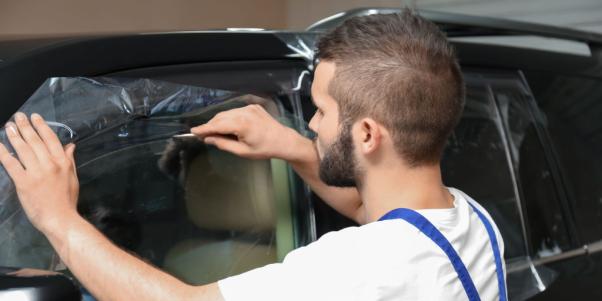Car window tinting is a popular way to enhance privacy, reduce glare, and protect against harmful UV rays. However, each state has its own regulations regarding the darkness level of tint allowed on vehicles. If you’re a car owner in Florida and considering tinting your windows, it’s essential to understand the state’s guidelines to ensure you’re within the legal limits. In this comprehensive guide, we’ll delve into the regulations for car window tint darkness in the state of Florida.
Table of Contents
Understanding Window Tint Darkness:
Window tint darkness is typically measured in terms of Visible Light Transmission (VLT), which represents the amount of light that can pass through the window film. The lower the VLT percentage, the darker the tint. State regulations define the maximum VLT percentage that is permissible for various windows on a vehicle.
Florida’s Window Tinting Laws:
Florida has specific regulations for window tint darkness, which apply to different windows on your vehicle. Here’s a breakdown of the regulations:
- Windshield: Florida law allows non-reflective tint along the top of the windshield above the manufacturer’s AS-1 line. The AS-1 line is typically located around the rearview mirror area. This tint strip must not extend more than six inches down from the top of the windshield.
- Front Side Windows: Front side windows, also known as driver and passenger windows, must allow more than 28% of light to pass through. In other words, the tint darkness must have a VLT of 28% or higher.
- Back Side Windows and Rear Window: There are no restrictions on the darkness of tint for back side windows and the rear window. You’re allowed to have any level of tint darkness on these windows.
Medical Exemptions and Additional Considerations:
Florida law does allow medical exemptions for individuals with specific medical conditions that require reduced exposure to sunlight. However, to qualify for a medical exemption, you must have a certificate from a licensed physician, stating the medical necessity for window tint darkness that falls outside the legal limits.
Consequences of Non-Compliance:
Failure to comply with Florida’s window tinting laws can result in consequences such as fines and citations. Law enforcement officers may conduct inspections to determine if your window tint adheres to the legal guidelines. It’s important to remember that you can be held accountable even if your vehicle was tinted by a previous owner.
Choosing the Right Window Tint Darkness:
While the Florida regulations outline the maximum permissible tint darkness, it’s essential to consider your preferences and needs when selecting window tint. Tint darkness impacts factors such as privacy, visibility, and heat reduction. Finding the right balance between adhering to the law and achieving your desired outcomes is crucial.
Consulting a Professional:
When in doubt, it’s advisable to consult a professional window tint installer who is well-versed in the state’s regulations. An experienced installer can help you choose the appropriate tint darkness for your vehicle, ensuring that you’re compliant with the law while enjoying the benefits of window tinting.
Final Thoughts:
Tinting your car windows can provide numerous advantages, from increased privacy to improved comfort during hot Florida days. Understanding the state’s regulations on window tint darkness is essential to avoid legal issues. By adhering to Florida’s guidelines, consulting a professional, and making informed choices, you can enjoy the benefits of window tinting while staying on the right side of the law.
For expert window tinting services in Orlando, Turbo Tint Orlando is your trusted partner. Our team is well-versed in Florida’s regulations and can provide you with high-quality window tinting that complies with the law and enhances your driving experience.
Also Read: Quote Cars for the Love of Automotives and Car Movies

